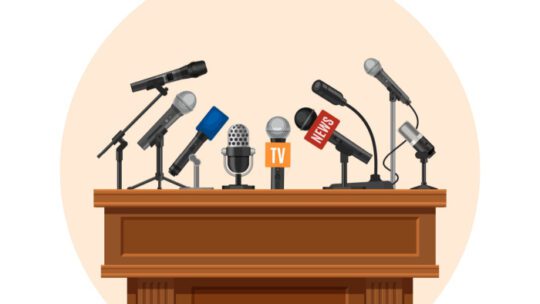
The indictment of former president Donald Trump provides a lesson that young PR pros should remember: Like other powerful CEOs of Boeing, BP and Wells Fargo, to name a few, all the best PR minds combined can’t save a person or entity from the judgments of the public or law officials.
Many of the former president’s actions should be used as “what-not-to-do” PR tutorials. Arguably, at the top of the list should be how he acted during his press conferences.
On May 11, President Biden will officially announce the end of the Covid-19 emergency regulations, which have been in effect for more than three years. That does not mean that the coronavirus has been eliminated from the United States. But it does provide a good segue to revisit Trump’s press conference PR miscues during the early days of the pandemic.
Trump’s faulty pressers should be required watching because there are many “do not copy” lessons for PR people.
Below are several of the most important:
Lesson #1: Not permitting another featured speaker to finish a statement will result in negative coverage.
Lesson #2: Before suggesting a press conference (which in my opinion is almost never), consider the news value of the presser, its purpose and the quality of the speakers.
Lesson # 3: Take responsibility. The former president said he feels no responsibility for the Covid situation and blamed others for it.
Lesson # 4: Keep press conferences short. Trump’s pressers often ran about two hours, giving reporters more than enough time to think of questions that the president disliked.
Lesson # 5: No one likes a bragger. The former president always praised and applauded himself, using self-congratulatory, self-aggrandizing phrases.
Lesson # 6: Not all clients have the temperament to be questioned by journalists. How a client replies to a question can determine how the individual is portrayed by the media.
Lesson # 7: Press conferences should be held only when important news will be announced.
Lesson # 8: Press conferences often disappoint a client who expects major news coverage.
Lesson # 9: Press conferences should always include individuals who can answer questions that the principal speaker can’t.
Lesson # 10: Press conferences can be dangerous. Questions might be asked that the client doesn’t want to answer, resulting in blaming the agency for not being able to control the media.
Lesson # 11: There are alternative methods of disseminating a client’s messages other than a press conference. PR people should always present these to the client.
Lesson 12: Blaming others for a problem will not deter negative press coverage.
Lesson # 13: As negative coverage of Trump’s pressers showed, the company and the title of those presenting will not impress the media.
Lesson # 14: Clients and PR people should always appear upbeat when engaging with the press.
Lesson # 15: Always be factual; reporters check statements.
Lesson #16: Prior to suggesting press conferences (or interviews), consider whether the client can handle negative questions in a dignified manner.
Lesson # 17: Regardless of the individual’s title, speaking in a know-it-all attitude is a mistake.
Now that the former president is back on the campaign trail, PR pros should pay close attention to his remarks. History shows that additional “do not do as I do” lessons for communications will emerge.
In addition to the above lessons, there is one that PR people should always keep in mind: The indictment against the former president detailed charges that date back to the 2016 presidential election.
Those in PR should never assume that an old story will not resurface, and if it does, there’s not much they can do to prevent it from happening.
In the final analysis, it’s the press that has the upper hand, no matter how important your client is.
Arthur Solomon was a journalist and SVP/senior counselor at Burson-Marsteller who worked in sports and other sectors. Contact him: [email protected]
[Editor's Note: The writer’s views do not necessarily reflect those of PRNEWS. We invite opposing essays from readers.]
